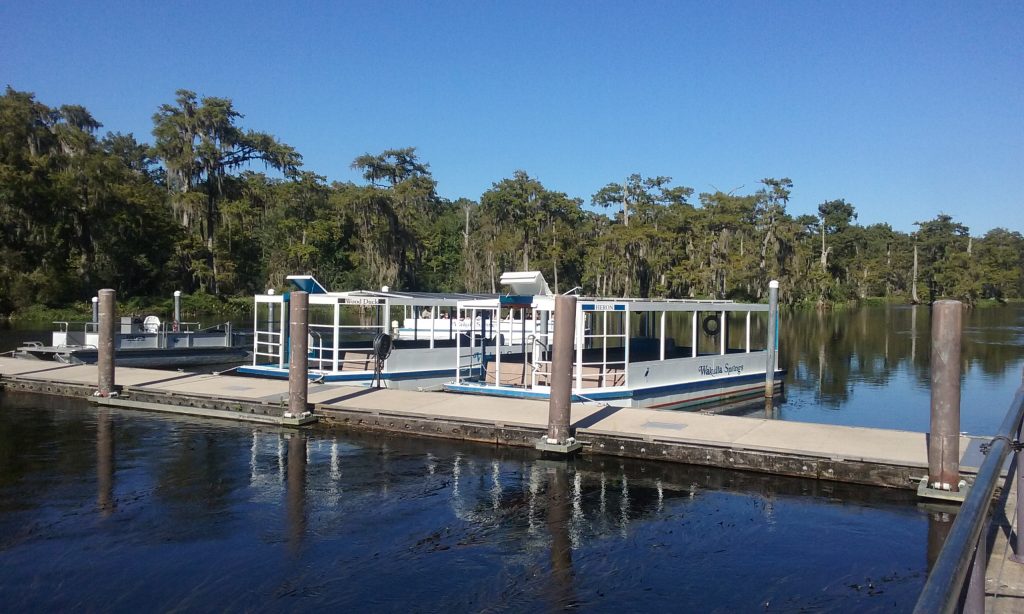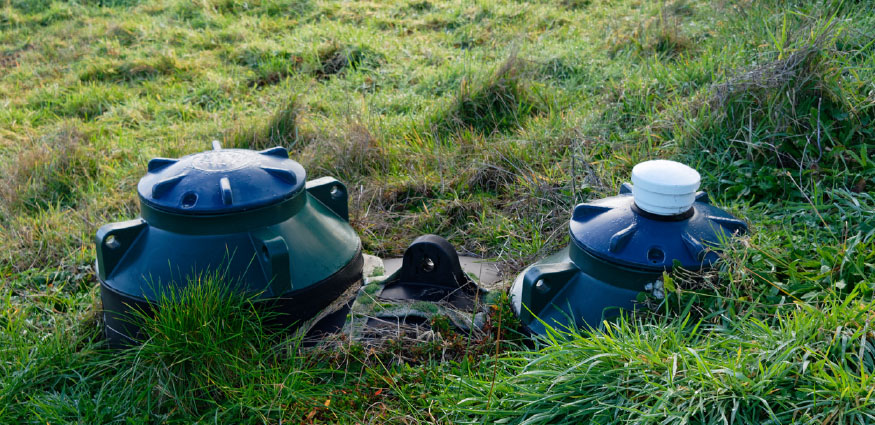By Andrea Albertin and Mary Lusk
As the state of Florida moves forward with watershed and springs basin restoration plans, also known as basin management action plans (BMAPS), reducing nitrogen loads to degraded water bodies is a priority in many areas. Nitrogen is an essential plant nutrient, but in excess in certain aquatic ecosystems it can lead to water-quality deterioration through algal growth and fish kills.

Excess nitrogen in surface water and groundwater can come from multiple sources. Depending on where you live, these sources include septic systems, fertilizer for agricultural production and residential lawns, livestock waste and wastewater treatment plants.
About 30 percent of Floridians (7 million people) rely on septic systems to treat and dispose of their household wastewater. This includes all water from bathrooms, kitchen sinks, washing machines and dishwashers. The Florida Department of Health (DOH) estimates that there are about 2.6 million septic systems in the state.
HOW SEPTIC SYSTEMS WORK
A septic system is made up of a septic tank, which is a watertight container buried in the ground, and a drain field or leach field. The septic tank’s job is to separate out solids (which settle on the bottom as sludge), from oils and grease, which float to the top and form a scum layer. Bacteria work on breaking down the solids (the organic matter) in the tank. The liquid wastewater, or effluent, then flows out through a pipe into the drain field, which is usually a series of trenches with perforated PVC pipes. Wastewater effluent from the septic tank seeps into the surrounding soil along the length of the PVC pipes.
Most of the wastewater treatment takes place in the drain field soil, where pathogens and some nutrients are removed by filtering and/or interaction with soil surfaces. Meanwhile, many harmful organisms die off in the soil environment. Florida law requires the bottom of the drain field to be at least 24 inches above the high-season water table. This allows for wastewater treatment while percolating through the soil before reaching the water table.
Septic systems are designed from a public health perspective to treat pathogens like harmful bacteria. They do a very good job of this under most circumstances. They are not designed to keep nutrients, like nitrogen, out of the environment. Even when a conventional system is functioning as it should and is the correct distance from the high water table, most of the nitrogen that comes into the tank (from human waste and kitchen scraps from a garbage disposal) still flows into the drain field soil. A conventional septic system only removes about 30 percent of the nitrogen that enters it.
IDENTIFICATION AND REMEDIATION OF NITROGEN SOURCES
The Florida Department of Environmental Protection (FDEP) uses a tool called the Nitrogen Source Inventory Loading Tool to estimate sources of nitrogen to groundwater in springs areas with a BMAP. This is based largely on land use in the recharge basin. For example, in the Jackson Blue Spring/Merritt’s Mill Pond BMAP, FDEP estimates that 79 percent of the nitrogen load to the spring is from fertilizer used for farming. In other areas, septic systems are the largest source of nitrogen. For example, in the Crystal River/Kings Bay BMAP area, septic systems contribute 42 percent of the nitrogen load.

If septic systems contribute 20 percent or more of nitrogen to the most vulnerable areas of a springs BMAP area, then a septic system remediation plan goes into place. This includes abandoning septic systems and hooking homes up to the sewer system where possible, and replacing conventional septic systems with advanced nitrogen-removal systems that remove more nitrogen than conventional systems.
SEPTIC SYSTEM EDUCATION AND INFORMATION
University of Florida Institute of Food and Agricultural Sciences (UF/IFAS) Extension and research faculty are developing a septic system educational outreach program for residents, “After the Flush,” which will be ready by early 2020. “Septics 101” will inform about septic system function and best practices, advanced nitrogen removal systems, and connections between septic systems and water quality. Also, it will address new septic system regulations in response to the adoption of BMAPs across Florida.
For the best resource on septic systems and applicable ordinances, local county health departments can provide plenty of information. The Florida DOH has a wealth of information on septic systems, permit requirements, advanced nitrogen removal systems and much more.
For specific information on BMAPS and septic system remediation plans, FDEP is the most comprehensive resource. All BMAPs (full reports with specific action items listed) are found there in addition to maps, information about upcoming meetings and other pertinent information.
Andrea Albertin is a UF/IFAS regional water resources Extension agent at the North Florida Research and Extension Center in Quincy. Mary Lusk is an assistant professor in the University of Florida’s Soil and Water Science Department at the Gulf Coast Research and Education Center in Wimauma.









